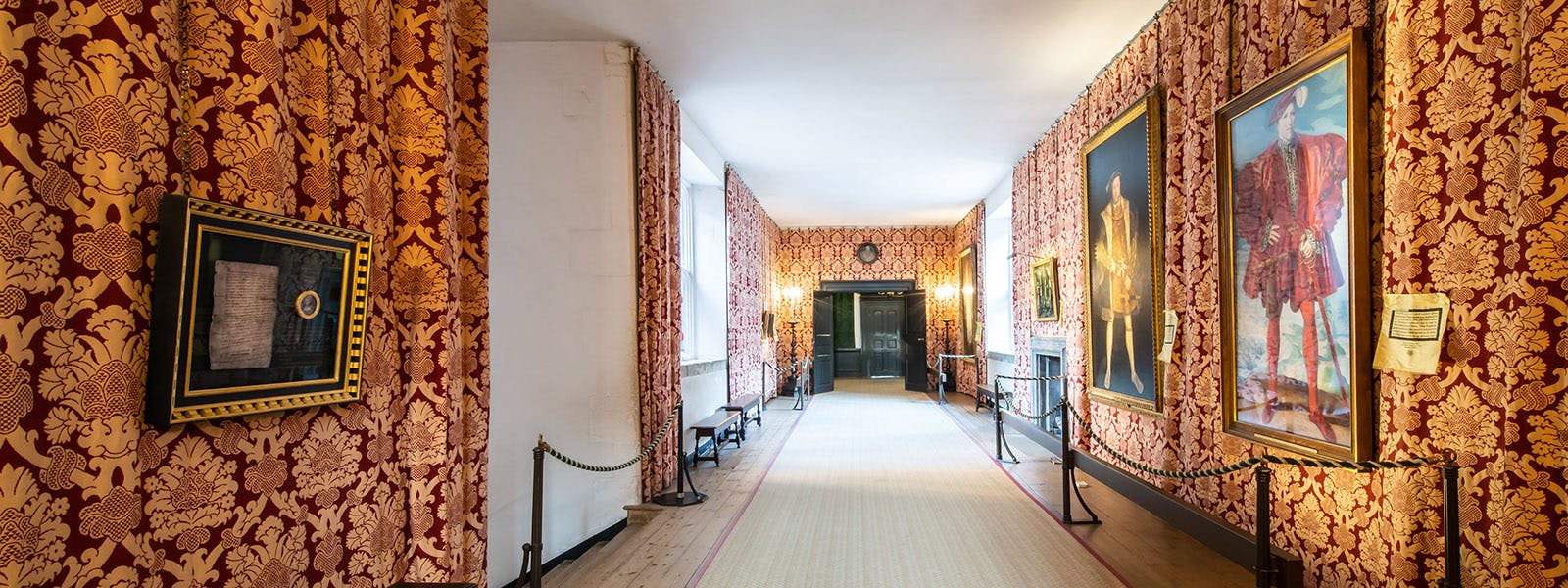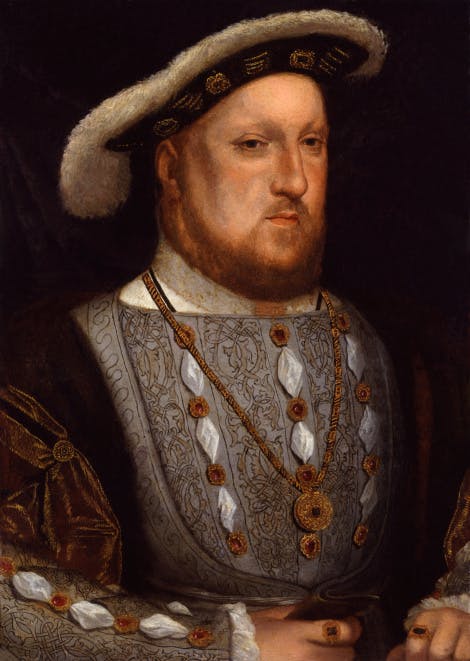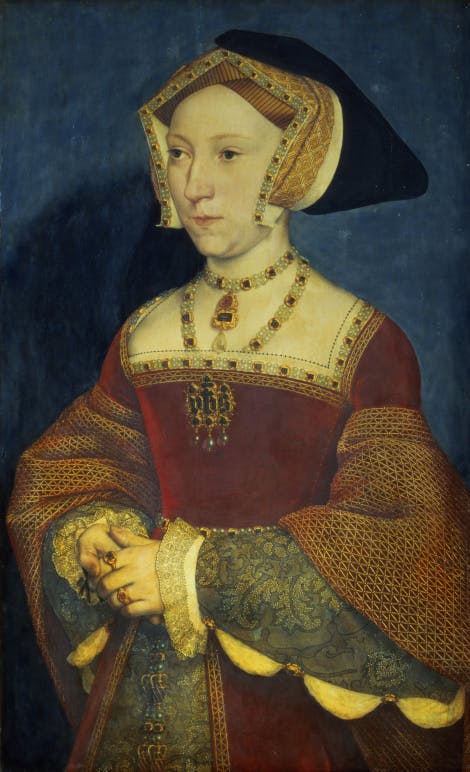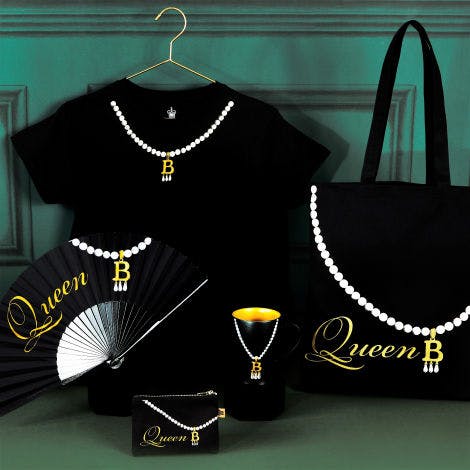
Skip the event ticket details and go to event summary.
When
Open In line with palace opening hoursTicketing information
Included in palace admission (Members go free)
Buy Hampton Court Palace ticketsWalk Henry VIII’s route from his private apartments to the Chapel Royal — now lined with 16th century paintings including portraits of Tudor monarchs — and see the infamous Haunted Gallery in the State Apartments at Hampton Court Palace.
Experience the Haunted Gallery
In 1541, Catherine Howard, Henry VIII’s fifth queen, discovered that she was to be charged with adultery. Only a few years earlier, her cousin and Henry's second queen, Anne Boleyn, had been executed after similar accusations had been made.
Legend has it that Catherine, terrified and desperate, broke free from her guards stationed outside her rooms at Hampton Court Palace and ran along the processional route in the hope of finding Henry in the Chapel, to plead her innocence.
Just before Catherine reached the door, she was seized by guards who took her screaming back to her rooms.
Catherine was executed at the Tower of London just three months later; her body still lies somewhere in the Chapel Royal of St Peter Ad Vincula, within the Tower walls.
Catherine’s ghost can, allegedly, be seen running through what is now called the Haunted Gallery at Hampton Court Palace, wailing for mercy.
The Processional Route and Tudor portraits
Henry VIII's 'Coming Forth' from his private apartments to the Chapel, on Sundays and special holy days, became the principal occasion when the King made himself available to his wider court.
Today, the route is lined with 16th century paintings including portraits of Henry and his family.
Highlights of the Processional Route
The Family of Henry VIII
'The Family of Henry VIII' is an extraordinary dynastic portrait of Henry VIII and his family. The painting shows the King at the centre, flanked by Jane Seymour, his third wife, and their son, Prince Edward (later Edward VI).
To either side of Henry’s canopy of state are his two daughters, who would later become Mary I and Elizabeth I. In the background, it is believed that we can also see two of the court 'fools', Will Somers and Jane, rare portraits of two Tudor servants.
The painting is also remarkable because it depicts an imaginary scene; Jane Seymour had died shortly after giving birth to Edward, eight years before the portrait was painted.

Image: Portrait of The Family of Henry VIII c. 1545. Royal Collection Trust / © Her Majesty Queen Elizabeth II 2018

Image: Henry VII, Elizabeth of York, Henry VIII and Jane Seymour, dated 1667. Royal Collection Trust / © His Majesty King Charles III 2024
Henry VII, Elizabeth of York, Henry VIII and Jane Seymour
Henry VIII's court artist Hans Holbein immortalised the King in his portraiture. At Whitehall Palace, he painted a life-size mural of Henry, together with his father Henry VII and their queens.
The original mural was destroyed by the fire that burnt down Whitehall in 1698. Only later (much smaller) copies survived; this one, which was painted for Charles II, is the only surviving complete record of the mural.
The first part of the Latin inscription on the plinth in the centre of the mural translates, "If it please you to see the illustrious images of heroes, look on these: no picture ever bore greater"!

Image: Royal Collection Trust / © His Majesty King Charles III 2024
William Reskimer
Holbein’s paintings of Henry VIII’s courtiers are some of the most realistic and powerful portraits of the 16th century. This is William Reskimer, who came from Cornwall and rose through the ranks of Henry’s elite servants to become a ‘Gentleman Usher’ in 1546. Holbein probably painted him in the 1530s. Men like Reskimer were the oil that enabled the smooth running of Henry VIII’s court.

Image: Royal Collection Trust / © His Majesty King Charles III 2024
Portrait of a Man in Red
This portrait is a mystery. We do not know who painted it, or who the subject might be. But it is nonetheless a wonderfully confident portrait of a dashing and wealthy young man of the 1530s or 40s. Full-length portraits of men or women wearing one bright colour in a landscape are rare in the 16th century.
The man’s pose is all about power and success, from his extraordinarily stylish costume to the sword and dagger hanging from his belt.

Image: Royal Collection Trust / © His Majesty King Charles III 2024
Elizabeth of York
Very little survives from Henry VIII’s own collection of paintings, but this is one of the exceptions. This is a portrait of Henry’s mother, Elizabeth of York. Elizabeth’s marriage to Henry VII created the Tudor dynasty whose symbol was the Tudor rose, combining the red rose of Lancaster and the white rose of York, shown here.
Explore what's on

- Things to see
Half Price Tickets
Don't miss the new year sale on tickets to Henry VIII's epic home. Only available for online tickets.
-
07 January - 06 February 2026
- Hampton Court Palace
- Included in palace admission (Members go free)

- Things to see
Great Hall
Experience the splendour of the Tudor court in Henry VIII's Great Hall, complete with his magnificent tapestries.
- Open
- In line with palace opening hours
- Hampton Court Palace
- Included in palace admission (Members go free)

- Things to see
Wolsey Closet
Explore this hidden Tudor space, the only surviving room of the apartment that Cardinal Wolsey had built for Henry VIII.
-
Open
- In line with palace opening hours
- Hampton Court Palace
- Included in palace admission (Members go free)
Browse more history and stories

Henry VIII, Terrible Tudor?
Who was the real Henry VIII?

Catherine Howard
A young woman whose marriage to Henry VIII would end in tragedy

Jane Seymour
Henry VIII's favourite Queen?
Shop online

Shop Anne Boleyn
Shop our collection of gifts and souvenirs, inspired by the Anne Boleyn and her infamous 'B' pendant necklace.
From £3.00

Shop Hampton Court Palace
Explore our gifts and souvenirs, inspired by over 500 years of history from Hampton Court Palace.
From £2.50

Tudor Rose Cushion
Perfect for a history lover, this Tudor rose cushion symbolises the joining of two rival houses, York and Lancaster.
£40.00
